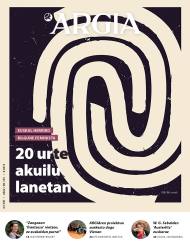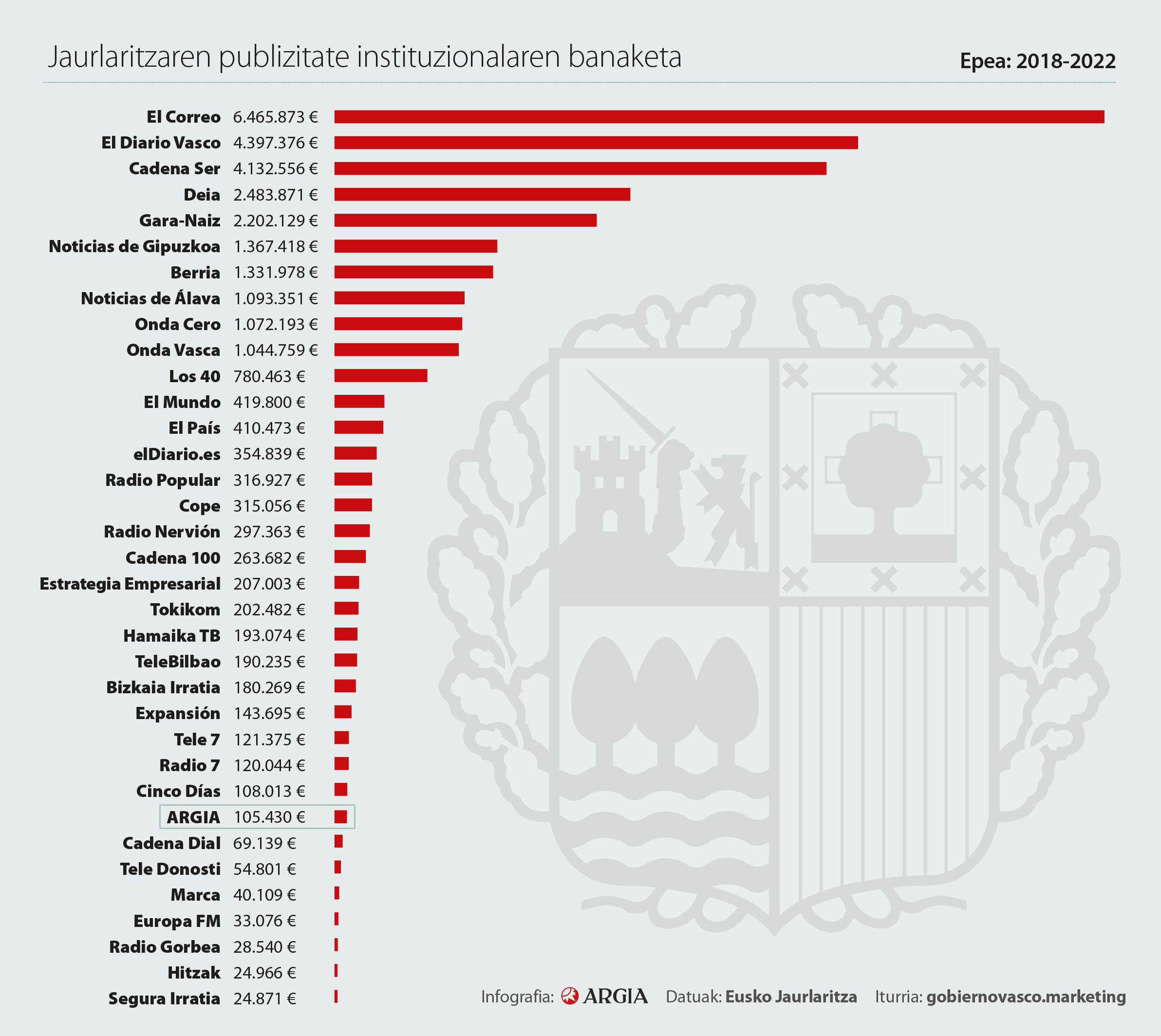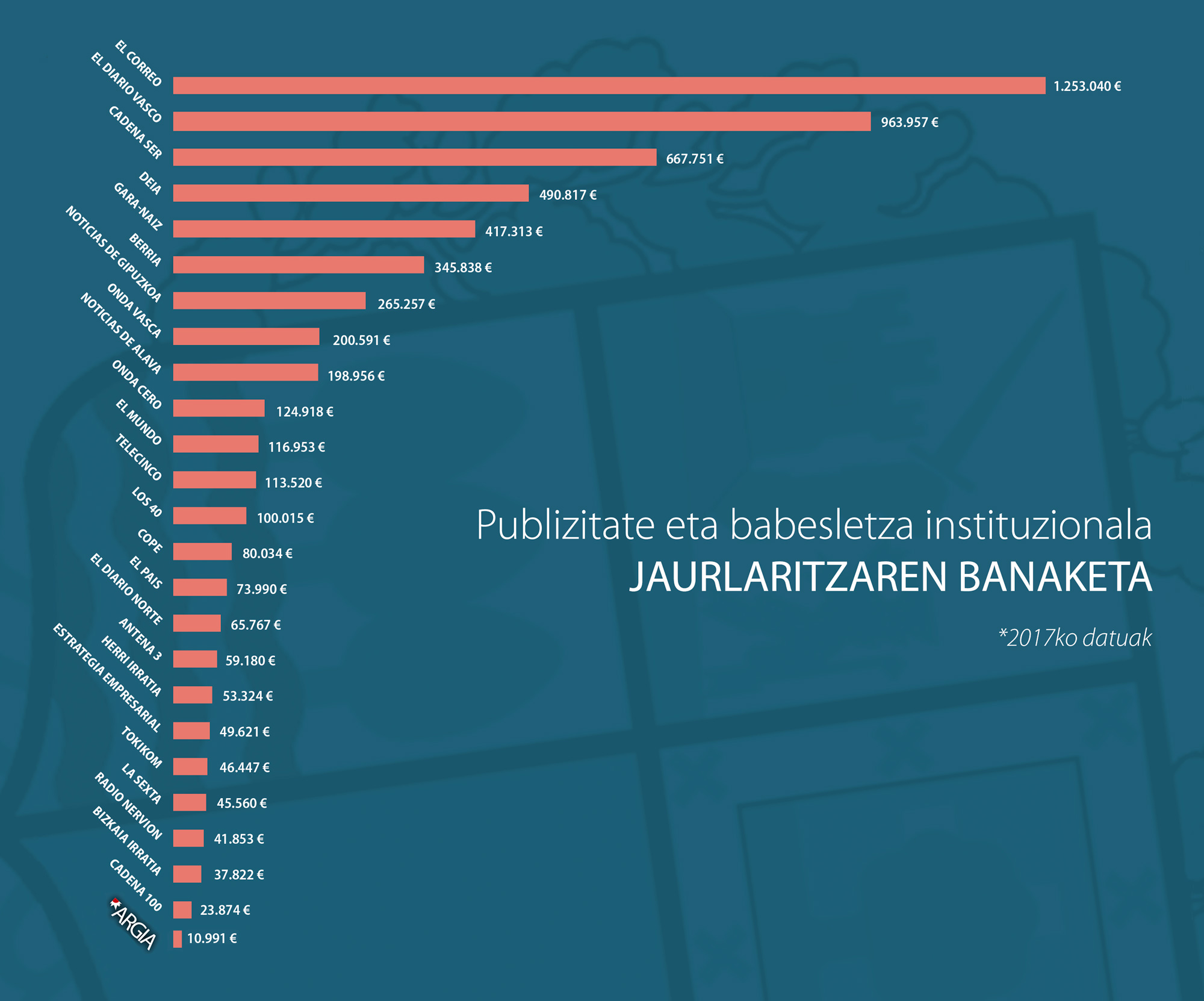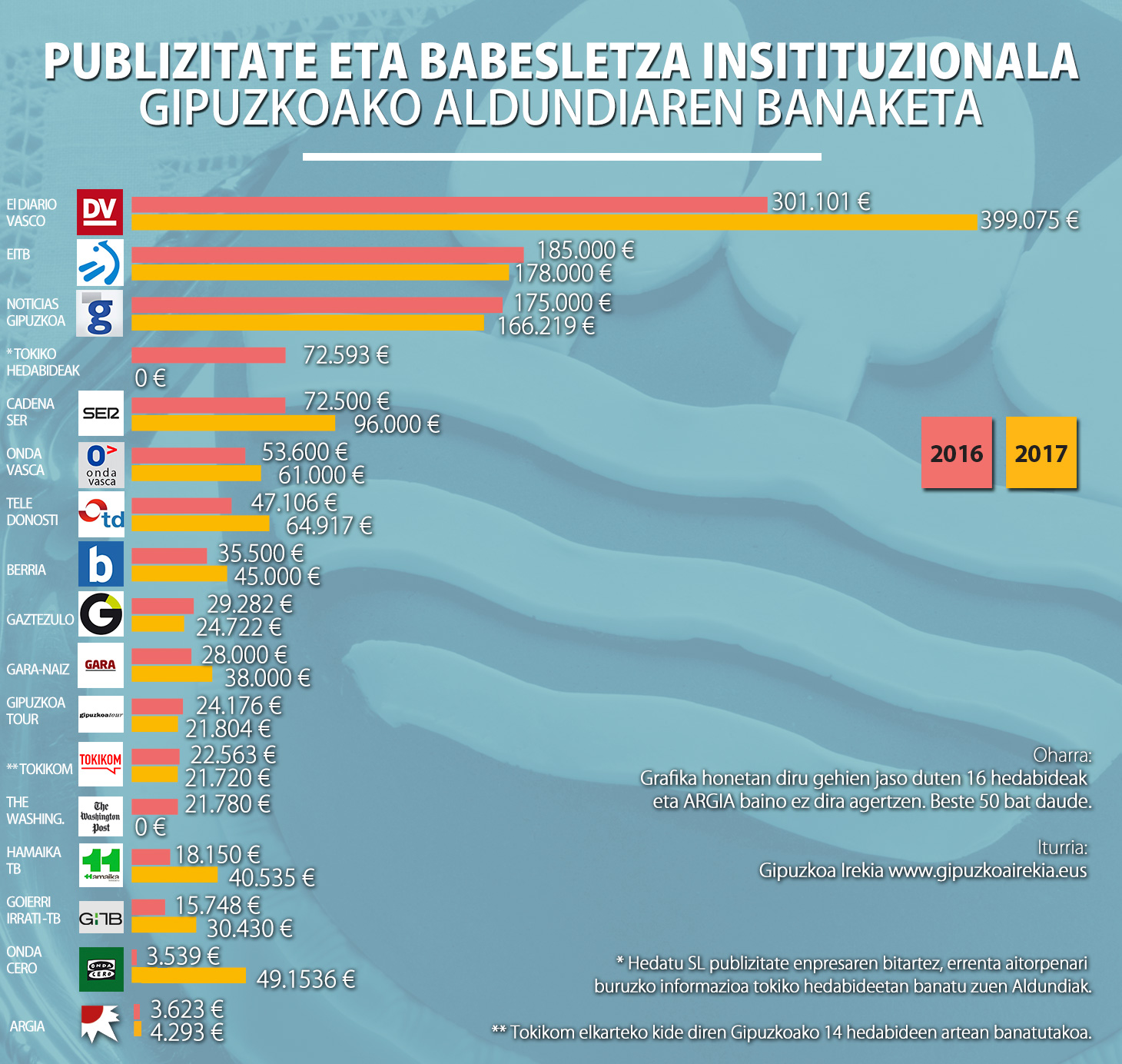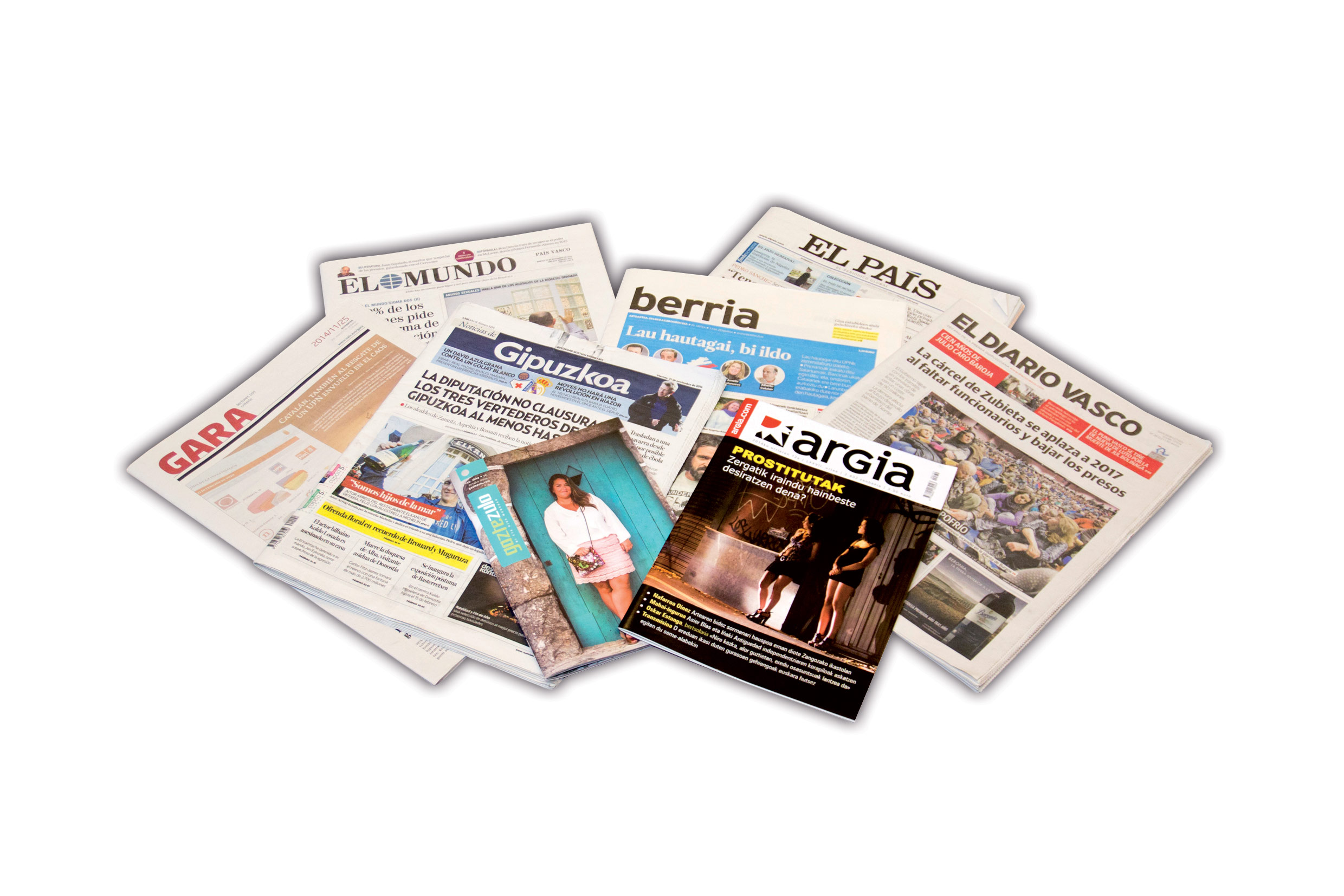"Most major newspapers depend entirely on institutional advertising, they disappear without it"
- Ad Convention - Dependencies between the media and the State of Austria. This is the title of the presentation by researcher Daniel Grabner (Austria, 1990) at the KriKoWi conference. It explains in detail how institutional advertising is distributed in that country. Interviewees have considered it interesting for Euskal Herria to see how the topic is managed in other places.

Do the Austrian institutions spend a lot of money on institutional advertising?
Yes. If you compare Germany to the north, 10 times more per inhabitant.
How much money are we making?
In the last ten years, between EUR 175 million and EUR 200 million have been spent annually. However, the year 2020 was highlighted, as with the pandemic most media, especially paper media, had a big problem: the decline of advertisers. Every time an economic crisis breaks out cyclically, the government is always taking a step forward, putting more institutional publicity, giving the media a grant bonus for survival.
Which institutions have you investigated? Have you come to the Austrian Government or to the municipalities?
In Austria we have a public database in which all public institutions must put quarterly where they are wasting institutional advertising and how much. This started in 2013, and institutions are required by law to explain clearly where they put it. This database contains all the information from government ministries in Austria, through Vienna and other municipalities, to public enterprises, data from hundreds of public agents.
Who gets the most money?
Distribution is repeated annually in general. Large newspapers and planks receive the most in absolute terms. Kronen Zeitung and free newspapers receive millions. Of course, the main tabloids and newspapers have more readers and, therefore, if the money is distributed by readers, it seems balanced at first glance.
The mainstream media receive the most.
Yes. However, this could be questioned because institutional advertising is used to subsidise the media and it would make sense for the media with fewer resources to be more supported, but the reality is not that.
In addition to advertising, are there media subsidies in Austria?
Yes. In a way, almost all the media are fighting for survival and the government grants them subsidies as a mechanism to ensure plurality. However, grants allocate EUR 10 million to all, comparing a fragility with the EUR 170 or 200 million they distribute as institutional advertising. It is a great problem, because it requires a political battle and no political party is seen wanting to maintain the fight. However, the issue is very important because it totally conditions the world of information. In order to make distribution fairer, one proposal would be to increase subsidies for all and to reduce the institutional advertising received by a few.
How much does that money condition information?
That is a good question. In order to respond from a scientific point of view, it would require crossing data from institutional advertising with media choices when issuing certain information. I have not done so, but it is obviously conditional.
Are the allocation criteria clear?
"This system is not designed to give impetus to small or independent media"
No. There are parties that become quite flexible in spending public money, and some always carry more. Sometimes there is an article in some media about this issue, but in general it is a monetary distribution that goes unnoticed. Politicians would answer them in a broad way, an argument they would use to justify the number of readers, or perhaps they would tell them that they put more ads on planks because their readers are less educated and want to reach that particular group of readers. Of course, this argument can always be turned around. However, you must be aware that here some media are very strong, such as the newspaper Kronen Zeitung, which in 2000 entered one of the two homes of the country, with a hearing of 50%. Politicians feared him very much and continue to say so.
Are politicians afraid of the media, therefore not the other way around?
That's it. Kronen Zeitung is a newspaper that has the power to destroy the person with a campaign against a minister. This gives them great power in asking for institutional advertising.
Is there a debate on the distribution of institutional advertising?
A huge scandal erupted 10 years ago when the government learned, and above all, that the prime minister wasted all barbarity in his campaigns. Reforms were made, and that's why we have this database on the transparency website. Before, you could not systematically know where the money was going. Today there is a public debate, but, to put it another way, only “quality media” address the issue. Not even planks, etc., and given that they are the ones who receive the most money, you can understand why there is silence.
Why have you decided to investigate this matter?
I have always been interested in the media economy. I am particularly interested in media ownership and its influence on information. And because in the database that we were talking about, they started putting institutional advertising data, I thought it was interesting to analyze that data.
And what are your conclusions?
These are the first conclusions, because I have not yet finished the investigation. However, I could say that I was surprised by the dependence of the main media on institutional advertising. If we look at the economic benefits of the companies that own the media and take away the public money they are given as institutional advertising, the result is truly surprising. They are totally dependent. If they stopped distributing institutional advertising, most newspapers would disappear.
Is institutional advertising in Austria therefore used to perpetuate the status quo in the media landscape?
Yes. The media should receive subsidies if we are to ensure a plural media landscape. But this system is not designed to give impetus to small or independent media, and certainly small media should be supported more in the name of plurality. It is a very complex issue, there are very powerful people involved in monetary distribution, who in no way want to change the situation. The distribution of institutional advertising according to the readers is designed to keep each media in place.
Espainiako Gardentasun Kontseiluak zortzi ministeriori iragarkien datuak publiko egin behar dituztela exijitu ostean, salaketa jarri dute Auzitegi Nazionalean erabakia ez betetzeko.
Hedabide euskaldunak biltzen dituen Hekimen elkarteak bilera eskatu dio Gipuzkoako Foru Aldundiari, erakunde horrek iragarritako publizitate instituzionalaren beherakada aztertzeko. 2015eko aurrekontuarekin alderatuta, erdira jaitsiko du euskarazko hedabideetako publizitatea... [+]









